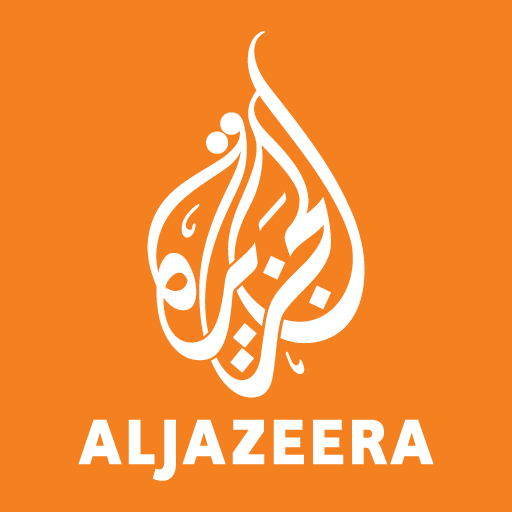- GiveDirectly used AI flood forecasts to deliver early cash to people in Kogi, Nigeria — reaching the right households before floods peaked.
- Once forecasted flood thresholds were met, we sent $105 to over 3,250 households 48-72 hours later.
- This early cash helped families evacuate, protect assets, and rebuild — incomes more than doubled, food insecurity dropped by 90%, and 93% felt better prepared for future floods.
- Now we’re ready to scale this model to more countries and climate risks.
Getting cash to people before disaster strikes can save lives. That’s why we piloted an AI-powered flood response in Nigeria, predicting where floods would hit and delivering early cash to those most at risk.
By combining cutting-edge forecasts with local insights, we reached flood-prone communities faster, more affordably, and with greater precision—delivering aid before the waters rose.
First, we identified the most flood-vulnerable wards in Kogi, Nigeria
Kogi state is one of the most flood-affected regions in West Africa.
In May, 2024 we used Google’s historical flood data, wealth indicators, and local insights from the Nigeria Hydrological Services Agency (NIHSA) to identify the 6 wards most vulnerable to flooding to run our pilot (see Appendix).
Each ward includes between 3-10 different communities for a total of 53 discrete communities. Each of these essentially becomes its own island during peak flooding because the roads are inaccessible.
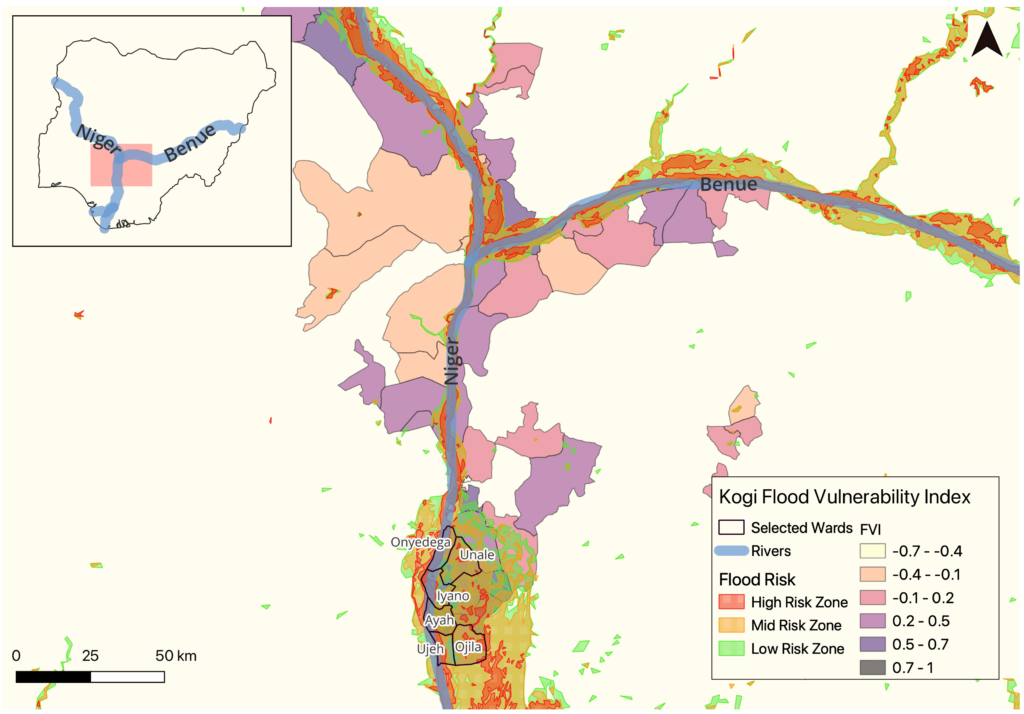
Independent evaluations later confirmed our targeting was accurate. All 53 communities we targeted were flooded in October, 2024. Satellite imagery, survey data, and an IOM post-flood report validated that Ibaji — our focus area — had the highest number of affected people in the region.
Then we pre-enrolled 38,000 people for payments ahead of floods
This modeling helped us select the right communities. But to get cash there quickly and affordably, we needed a better way to reach people:
We saved $80,000 by replacing door-to-door enrollment with text message (USSD) self-enrollment.
- 📱 Recipients dialed a short code and answered questions about age, location, ID, and bank info, allowing us to confirm eligibility remotely.
- 🪪 We verified people’s identities using remote ID verification technology and our call center.
- 👥 Over 38,000 people across 6 high-risk wards enrolled using feature phones in just two weeks.
- 🕒 A traditional field team would have taken a year to reach the same number of people.
This approach let us focus more funds on recipients and less on logistics.
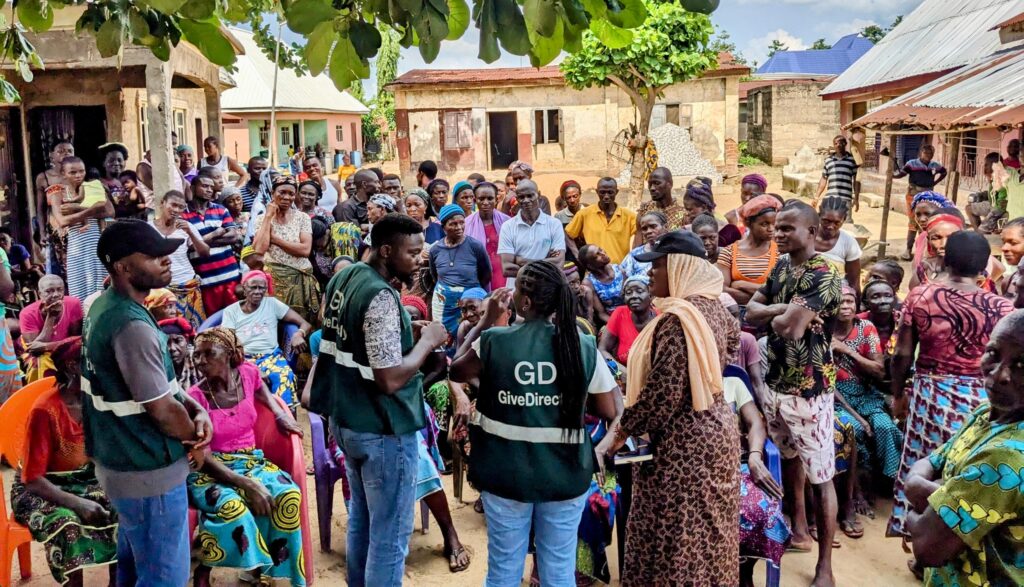
Our hyper-accurate flood model told us when to trigger payments
We used AI-powered forecasts and community insights to design payment “triggers” for when flooding was about to peak. Most anticipatory aid programs set flood triggers at a broad Local Government Area (LGA) level.
We took a more granular approach that let us target areas up to 10x smaller by:
- Partnering with hydrology experts at JBA Global Resilience and consulting local leaders.
- Using Google’s AI-driven FloodHub forecasts to track flood risk in real time.
- Defining thresholds as 20% of a community area forecasted to flood.
- Monitoring forecasts daily and cross-checked them with community observations on water levels and flood history.
These improvements were based on failures from our 2022 pilot. This wasn’t our first anticipatory program in Kogi, Nigeria — and we came prepared with hard-won lessons:
- In 2022, too few people were pre-enrolled, limiting our flexibility. In 2024, We pre-enrolled 38,000 people and reached 3,250 with early cash.
- In 2022, we were only set up to send payments after major flooding had already hit. In 2024, we delivered aid before severe floods arrived.
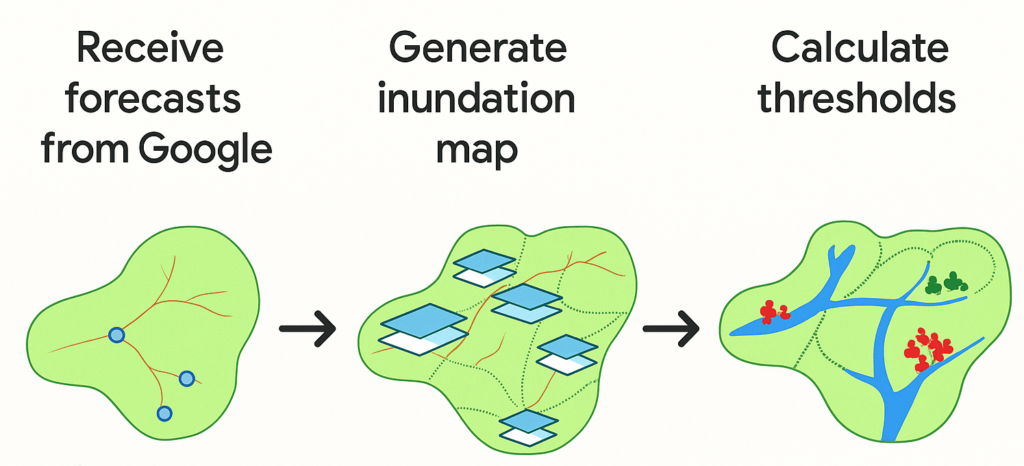
While AI helped us act quickly, community input made it work. Local residents helped refine flood triggers by sharing past flood patterns and monitoring daily water levels. These insights allowed us to catch early flood events that AI alone might have missed. Without this collaboration, many households might have missed the narrow window for timely support.
As flood waters started rising, our payment triggers were met and we sent cash
We sent early payments to 3,250 people between August 29 and October 6, several weeks before floods peaked on October 21 (according to NIHSA’s data and satellite imagery).
In two wards, we temporarily paused payments to resolve identity issues and ensure the right people were enrolled. Once those checks were complete, another 1,400 people received cash on October 24 — bringing the total number of households reached to over 4,600.
Families used this early cash to reduce losses ahead of floods and recover after
These floods were devastating for the wards we supported: 63% of recipients saw a drop in farming outputs and 51% had damaged homes. Because we got cash there early, people had the resources to protect their families, safeguard what they owned, and start rebuilding quickly.
They prepared before the flooding peaked
Recipients used the first $105 transfer ahead of peak flooding to strengthen their defenses and evacuate safely. With early cash in hand, families were able to:
- 🛶 Build bamboo rafts to protect food, belongings, and crops
- ⛰️ Evacuate to higher ground, especially moving children and elders
- 🧺 Stock up on essentials, like food and medicine
“The transfer came at a perfect time. It helped me evacuate my properties that could have been damaged by the flood.” — 31-year-old woman
“We built rafters to store farm produce and foods. We also moved the minors to neighbors with storey buildings.” — 34-year-old man
“We evacuated the minors to upper land where it is not easily flooded, we also construct rafters to stay, cook and keep watch of other properties from thieves.” — 36 year old man
They also rebuilt after the waters receded
A second $210 transfer helped families recover lost income, rebuild homes, and strengthen their long-term resilience:
- 💰 Household savings rose from 7% to 56%
- 📈 Weekly income more than doubled, from ₦4,500 to ₦10,000
- 🍲 Food security improved, with 97% facing food shortages before and just 7% after
- ✅ 93% of recipients felt better prepared for future floods
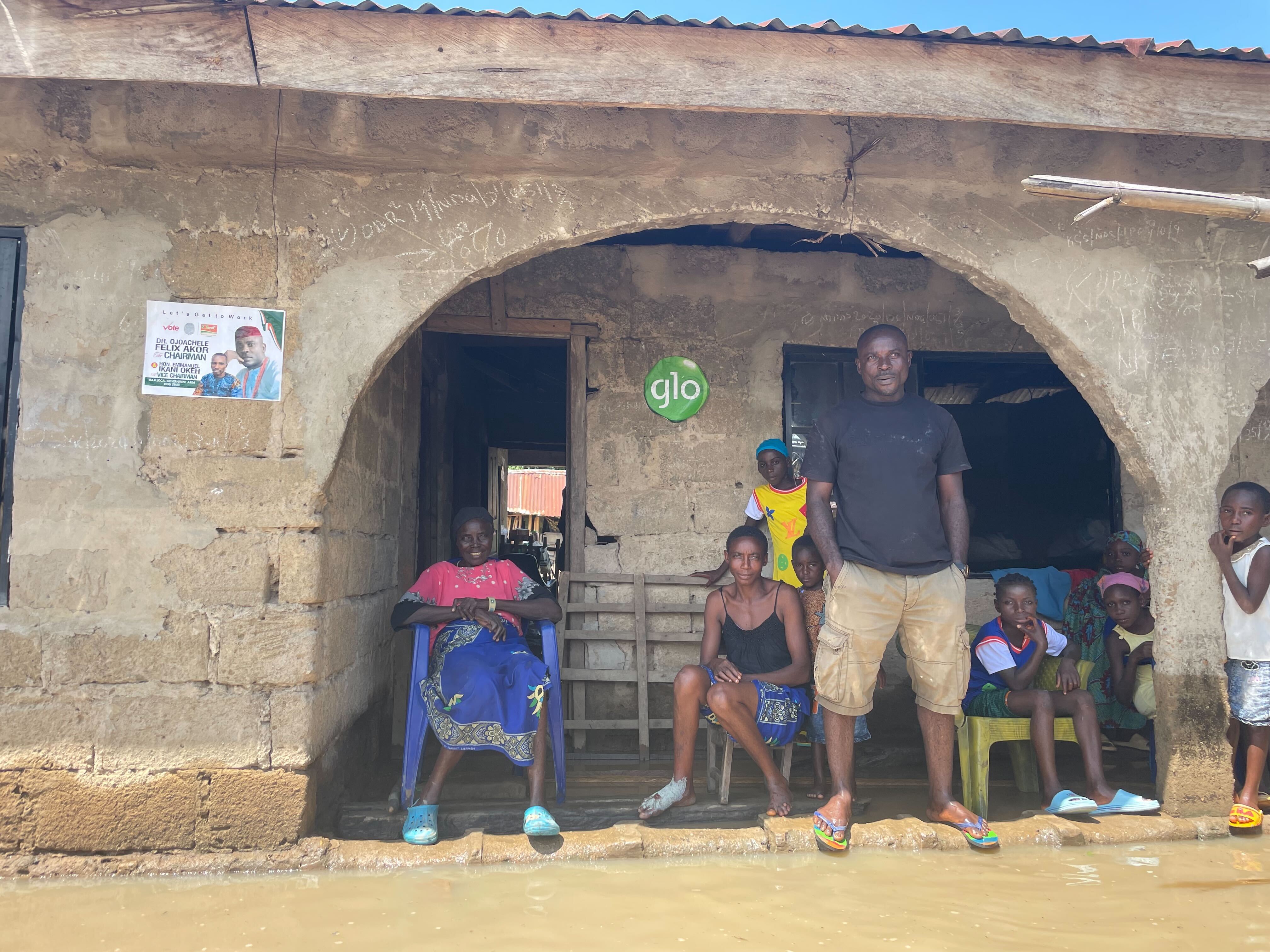
GiveDirectly is ready to scale our use of AI-powered early cash aid
This wasn’t just a one-time success — it’s a model for the future. GiveDirectly continues to work with Google Research to scale the use of AI for anticipatory action to new countries and explore anticipatory cash transfers for other hazards, such as droughts. New research continues to prove the impact of large, early cash payments before climate disasters.
We have the data, the tools, and the evidence that acting before disaster strikes saves lives and livelihoods. The question isn’t whether using AI to send anticipatory cash works — the question is, how fast can we scale it?
In the News
Appendix: Ward Selection
To identify which communities within Kogi were most vulnerable to floods, we used Google’s historical flood data, wealth indicators, and local insights. This data led us to Ibagi, a sub-district of Kogi. We then further pinpointed the most at-risk wards within Ibagi. Out of 41 wards we analysed, 6 were chosen (Onyedega, Unale, Iyano, Ayah, Ujeh, Ojila) based on three criteria:
- Wards with >1% population affected by Floods in last 5 years
- Wards with presence in the National Social Registry database (Nassco)
- Wards with high poverty rates
